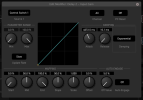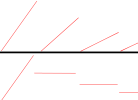Dave Merrill
Axe-Master
What's the simplest way to have a delay fade in when I un-bypass it?
I don't want to have a pedal for delay input level, which of course would let you control how it comes in. I want just my normal FC switch for effect bypass, with the delay set to Mute Effect In like usual.
One possibility I haven't tried is to put the delay in parallel, with a vol/pan block before it on that parallel path, leave the delay always on, and switch the vol/pan block on instead, set to fade in. I don't know if that's actually possible, but before I explore that, I wondered if there's a simple way within the delay block itself
Thoughts?
I don't want to have a pedal for delay input level, which of course would let you control how it comes in. I want just my normal FC switch for effect bypass, with the delay set to Mute Effect In like usual.
One possibility I haven't tried is to put the delay in parallel, with a vol/pan block before it on that parallel path, leave the delay always on, and switch the vol/pan block on instead, set to fade in. I don't know if that's actually possible, but before I explore that, I wondered if there's a simple way within the delay block itself
Thoughts?


